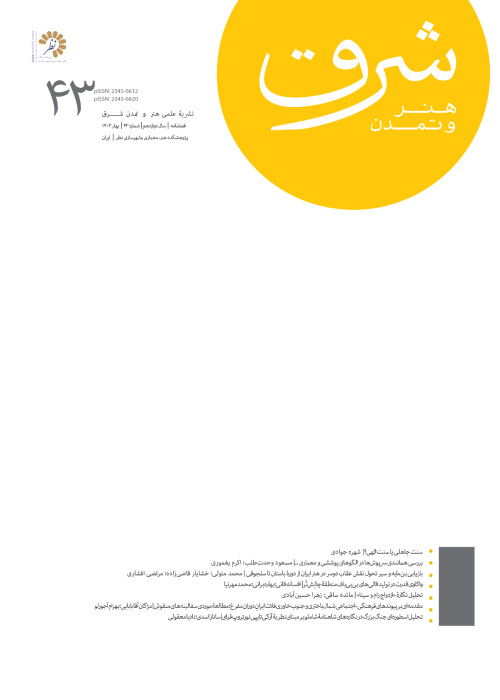Historical Analysis of Afghan Painting from Prehistoric Times to the Beginning of Amani Reforms
Afghanistan is a country in the Islamic world, as well as Iran’s civilization domain, which is of special importance both politically and culturally. Historical texts and ancient excavations from the reign of Shah Amanullah Khan and then in different regions of Afghanistan have provided much evidence of the existence of paintings from the prehistoric era as well as the historic era scattered all around Afghanistan. This study attempts to shed light on the historical Afghan painting from prehistoric times to Afghanistan’s independence and analyze it. The current research was carried out using the library and archival sources with a descriptive-analytical method and through scrutinizing historical texts and reviewing archeological documents. The findings of the research show that the works of the Old and Middle Paleolithic eras have no motifs, and the works of the New Paleolithic era have zigzag line drawings. In the Bronze Age, there were geometrical designs and drawings on pottery, including geometrical shapes such as rhombuses, squares, and parallel lines, and the design of love flowers and animals such as goats was done by observing real proportions and in a linear manner. In the works of the Neolithic era, which include realistic or symbolic designs of animals and plants, as well as abstract geometric motifs in the Greco-Bactrian style, the Cybele tablet can be seen as a painted relief. Paintings in the Kushan era can be seen on ivory and glass with condensed figures, also in the painting of Buddha. reflect his life in the two schools of Gandhara and Mathura. The wall paintings of the Ghaznavid era in palaces, towers, and ramparts also benefit from the region’s special aesthetics. In the Timurid era, with the emergence of masters like Behzad, we witness a high point in terms of the aesthetics of form and content, which gradually declined and there is no sign of painters of the later era. However, from the time of the Durrani Shahs to the Amani reforms, painters such as Mohammad Azim Abkam, Mir Hessamuddin, Mohammad Reza Naqash, Mohammad Heydar, and Ali Ahmad appeared who were the pioneers of Afghan painting traditions until the arrival of western academic painting aesthetics.
- حق عضویت دریافتی صرف حمایت از نشریات عضو و نگهداری، تکمیل و توسعه مگیران میشود.
- پرداخت حق اشتراک و دانلود مقالات اجازه بازنشر آن در سایر رسانههای چاپی و دیجیتال را به کاربر نمیدهد.



